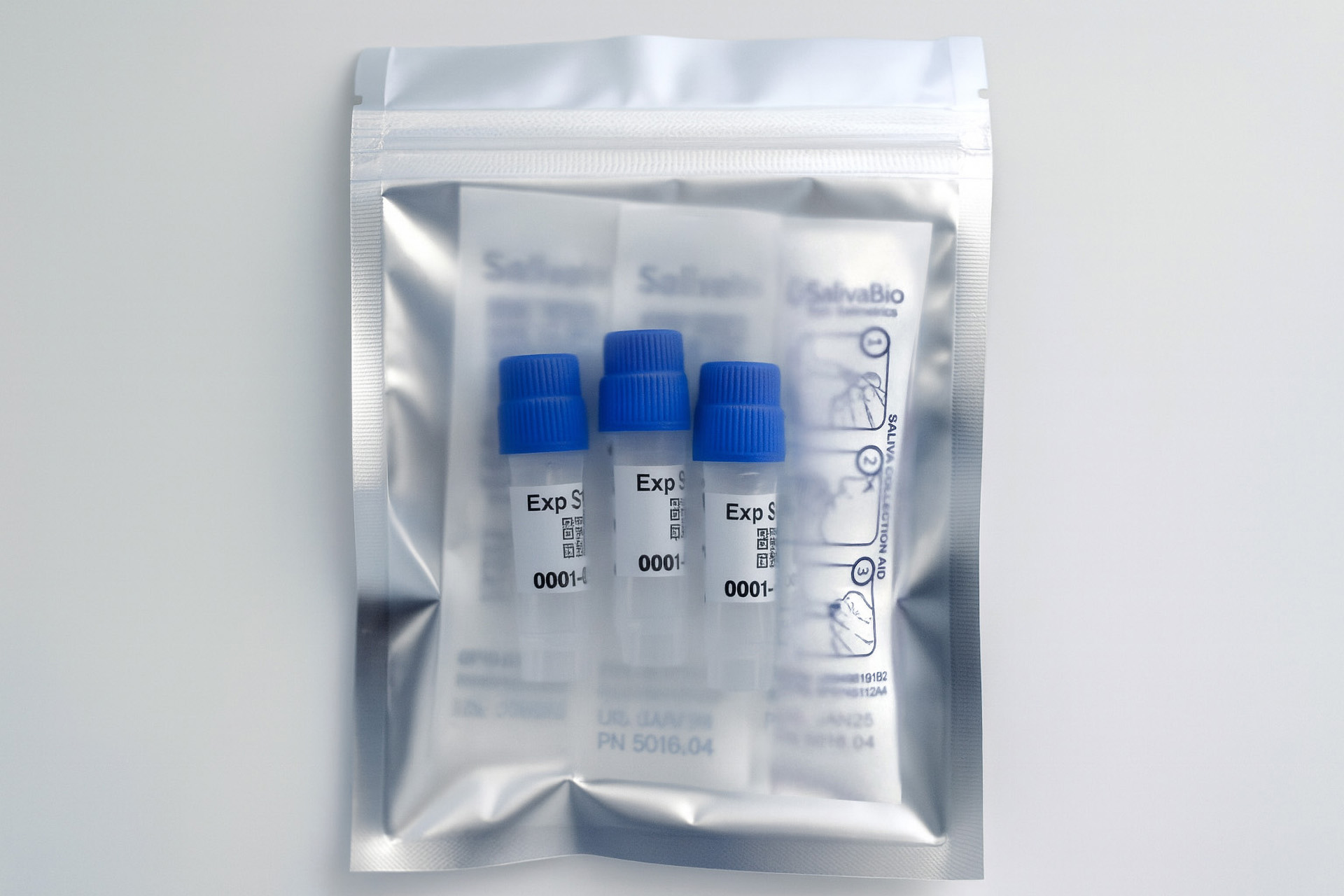Need Help?
Ask an expert
1. How to collect Salivary Total Protein
APPROVED SALIVARY TOTAL PROTEIN COLLECTION METHODS
Salivary Total Protein Collection Protocol
Collection volume, general considerations, and basic guidelines to maximize salivary total protein sample integrity. Use this analyte-specific collection protocol to plan you collection methodology and sampling schemes.

2. How to Assay for Salivary Total Protein
Send Saliva Samples to Salimetrics
Add to StudyEasy and accurate results from the Salimetrics CoreLab+ Laboratory.
Order Code5301
3. Technical Summary
| Analyte Summary | |
|---|---|
| Analyte: | Total Protein |
| Aliases: | TP |
| Serum-Saliva Correlation: | NA |
| *Optimum Collection Volume: | 75 μL |
| Assay Summary | |
|---|---|
| Methodology: | Colorimetric Assay |
| Sensitivity: | 5 μg/mL |
| Assay Range: | ------- |
| Assay Type: | Quantitative |
Background
Total protein is a non-specific measure of the total amount of all proteins present in a solution. It is used to examine changes in overall protein secretion in blood or saliva that are associated with disease states, or to look for differences in the ratio of specific proteins (or other analytes) to total protein that exist in different oral fluids or that occur in response to physiological changes or disease states. (1-6) Total protein is also sometimes used to normalize concentrations of various salivary proteins such as SIgA in different samples, since concentrations can vary significantly in response to stimulation or alterations of saliva flow. (5) It has been suggested, however, that this practice may be misleading because of differences that exist in the control of secretion of individual salivary proteins among the different salivary glands. (7-9) Changes in total protein in saliva and gingival crevicular fluid have been examined in relation to the presence of periodontal disease, and it may have some use as a marker of certain disease conditions. (10,11) Our laboratory uses the Pierce bicinchoninic acid assay (BCA assay), which is compatible with various chemicals in buffers that can cause interference in other protein determination methods, such as the older Lowry method.
References & Salivary Total Protein Research
-
-
- de Oliveira, V.N., Bessa, A., Lamounier, R.P., et al. (2010). Changes in the salivary biomarkers induced by an effort test. Int J Sports Med, 31(6), 377-81.
- Aydin, S. (2007). A comparison of ghrelin, glucose, alpha-amylase and protein levels in saliva from diabetics. J Biochem Mol Biol, 40(1), 29-35.
- Sivakumar, T., Hand, A.R., Mednieks, M. (2009). Secretory proteins in the saliva of children. J Oral Sci, 51(4), 573-80.
- Shi, D., Meng, H., Xu, L., et al. (2008). Systemic inflammation markers in patients with aggressive periodontitis: A pilot study. J Periodontol, 79(12), 2340-46.
- Lee, J.Y., Chung, J.W., Kim, Y.K., et al. (2007). Comparison of the composition of oral mucosal residual saliva with whole saliva. Oral Dis, 13(6), 550-54.
- Furuholm, J., Sorsa, T., Qvarnstrom, M., et al. (2006). Salivary matrix metalloproteinase-8 in patients with and without coronary heart disease may indicate an increased susceptibility to periodontal disease. J Periodontal Res, 41(5), 486-89.
- Brandtzeg, P. (2007). Do salivary antibodies reliably reflect both mucosal and systemic immunity? Ann N Y Acad Sci, 1098, 288-311.
- Rudney, J.D., Smith, Q.T. (1985). Relationships between levels of lysozyme, lactoferrin, salivary perioxidase, and secretory immunoglobulin A in stimulated parotid saliva. Infect Immun, 49(3), 469-75.
- Bishop, N.C., Gleeson, M. (2009). Acute and chronic effects of exercise on markers of mucosal immunity. Front Biosci, 1(14), 4444-56.
- Burgener, B., Ford, A.R., Situ, H., et al. (2010). Biologic markers for odontogenic periradicular periodontitis. J Endod, 36(8), 1307-10.
-
- Andersen, E., Dessaix, I.M., Mombelli, A. (2010). Myeloid-related protein (MRP8/14) expression in gingival crevice fluid in periodontal health and disease and after treatment. J Periodont Res, 45(4), 458-63.
-
 Contact: Salimetrics (USA)
Contact: Salimetrics (USA)



